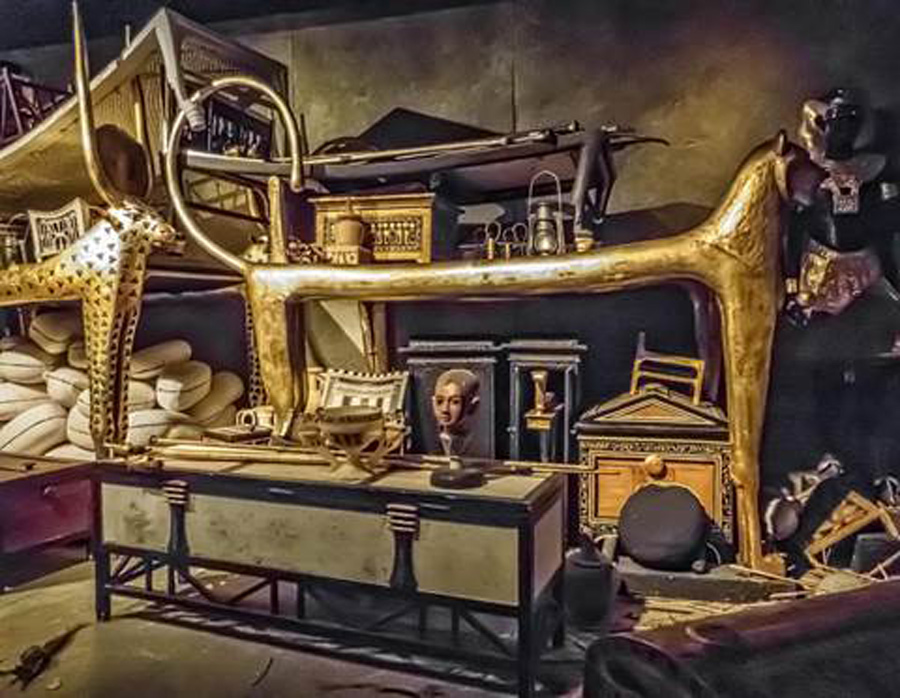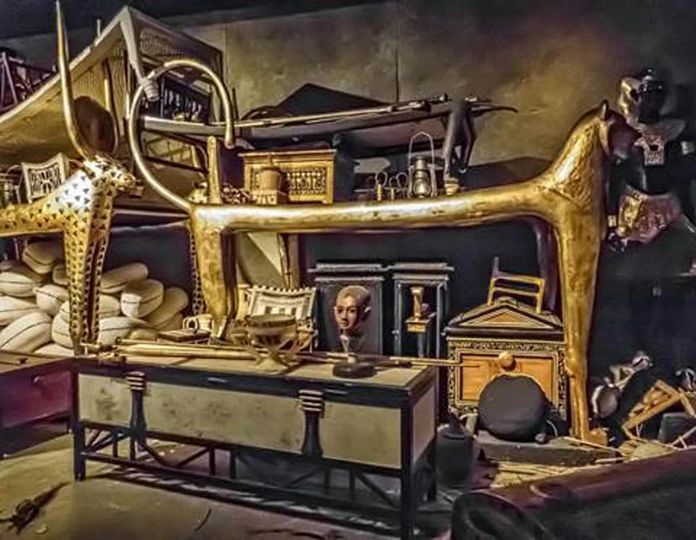Archaeologists recently made a highly significant discovery in Egypt. In a find some are describing as the most significant since the Tomb of Tutankhamen, a lost “Golden City” of Egypt has been found, with the potential to change our understanding of Egyptian history forever.
The city has been hidden underneath the sands of Luxor’s western bank in the south of Egypt. This city dates to the rule of King Amenhotep III, from around 1391 to 1353 BC, according to the lead archaeologist, Zahi Hawass.
Amenhotep was the 9th king of the 18th dynasty, ruling over a peaceful, prosperous and wealthy land. His reign, free from war, saw the construction of many huge public buildings and temples.
A Chance Discovery
The Lost Golden City was not the prime discovery that the archaeologists had intended to make. Hawass and his other team members had initially visited the area in September 2020, in the hopes of finding a mortuary temple. But, instead of the expected religious buildings, a whole city began to emerge.

The city was well organized, with an administrative area consisting of several large buildings with 10 foot (3 meter) brick walls, separate from that of the residential district. Further discoveries revealed a workshop area, where amulets, mud bricks, and other goods were made. The archaeologists also found other mercantile buildings, including a bakery.
- The Search and Legend of El Dorado
- Heracleion – Discovery of the Ancient Sunken Egyptian City
But the focus of the workshops was the construction and adornment of the huge temples, potentially including those in the large burial area was also discovered around the city outskirts. Much of this latter area, including the skeletal occupants of the graves, is still to be excavated.
But it is with the areas used by the living inhabitants of this city that there is the most potential. This discovery has the potential to give us a glimpse into how ancient Egyptians lived their lives, during a peaceful and wealthy time for Egypt.
The excavation began in September 2020, but the work is not yet over. Only the southern part of the newly-discovered city has been excavated or explored to date, with even the full extent of the city being unclear.
Treasures Beneath the Sands
Archaeologists had initially theorized that the site might have held a mortuary structure, where the subjects of Tutankhamun would have placed funerary items and food that they offered to him after he died in 1325 BC. But instead they discovered the zigzagging mudbrick walls and artifacts of a living city.
The structures around the city contained everyday items, including items used by artists, alongside more industrial finds. Evidence from the homes found around the city suggested that they housed workers. Everything pointed to this being the Pharaoh’s capital city.

Evidence of glass and metal production was found, as well as a cemetery filled with rock tombs. Apart from human skeletons, unusually skeletons of cows or bulls have also been found within the city walls. Researchers are investigating why these livestock animals were found in this way.
But the crowning achievement of this archaeological expedition must be the discovery of 22 mummies, all royal, and with no fewer than 18 kings. These mummies included those of Amenhotep III and Queen Tiye, his wife, and are on display in the New National Museum of Egyptian Civilization.
- Role and Power of Women in Ancient Egypt
- Story Behind the Ancient Egyptian Prince in Vermont
Some of the buildings bore the name of Amenhotep III’s son, Akhenaten. A controversial Pharaoh, Akhenaten abandoned the old Egyptian pantheon in favor of worshipping a single sun god. Akhenaten also abandoned many of the existing religious sites in Egypt, including apparently this newly-discovered city.
Abandoned and Forgotten
The researchers note that ancient Egypt’s loss is modern archaeology’s gain, as the decision to abandon the site has led to its preservation over the millennia. While Akhenaten’s new religion did not survive long beyond his death, his son Tutankhamun seemed to prefer not to return to The Rise Of Aten, instead building a new capital at Memphis.
Tutankhamun, and his Vizier Ay who succeeded him, seem to have continued to make some use of the site, but it was never the focus of Royal patronage as it was before Akhenaten’s sudden religious reforms. Analysis of the four settlement layers at the site suggests it was inhabited as late as the 7th century AD, before being abandoned to the sands altogether.

Not since the discovery of the nearby Tutankhamen’s tomb in 1922 has such a significant discovery been made. Hawass named this city “The Golden City” because it was built during the golden age of Egypt, and in the hopes of the archaeological treasures which might be found there.
Amenhotep III may well have been the wealthiest Pharaoh of all time, and this city was built during this peaceful period in Egypt’s history. Many answers, including how these people lived, and why the grandson of Amenhotep chose not to return, may await discovery.
Top Image: Amenhotep III and his sun temple at Luxor. Source: Inigolaitxu / Adobe Stock; Ángel M. Felicísimo / CC BY 2.0.
By Bipin Dimri
